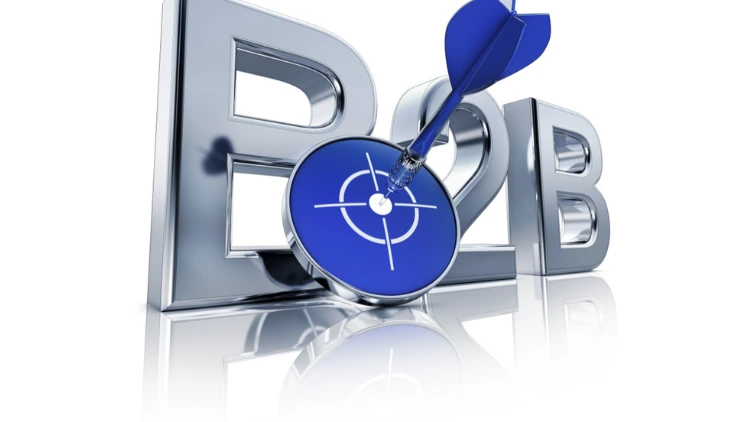B2B Sales: The Power of a Well-Managed Sales Pipeline

For small business founders and managers in the B2B space, sales are always top of mind. Driving revenue through successful B2B sales is what keeps the business growing. However, when it comes to the question of how many sales leads are needed to achieve growth targets, most business leaders are at a loss. This uncertainty often stems from a lack of attention to a critical component of the sales process: the sales pipeline.
Jump To Section

Earn As You Learn
Earn 25% commission when your network purchase Uplyrn courses or subscribe to our annual membership. It’s the best thing ever. Next to learning,
of course.
What Does B2B Sales Mean?
Before diving into the specifics of sales pipelines, it’s essential to understand what B2B sales means. B2B, or business-to-business sales, (that some people even term b to b sales), involves selling products or services from one business to another. Unlike B2C (business-to-consumer) sales, which focus on individual customers, B2B sales typically involve longer sales cycles, larger transactions, and multiple decision-makers. The stakes are higher, and the process is more complex, making effective pipeline management even more crucial.
The Challenge: No Direction or Scale Defined
Many B2B small business owners know they need more sales leads, but few have a clear idea of exactly how many leads are necessary to hit their growth targets. Without this clarity, it’s difficult to gauge whether current efforts are sufficient. Are you generating enough B2B sales leads? Are those leads qualified? Are they being nurtured effectively? These are questions that remain unanswered in the absence of proper pipeline management.
Once you calculate how many B2B sales leads you need, you can decide the scale of your marketing efforts, so that your efforts and budget match the leads needed. You can also decide which b2b sales lead generation channels are best for you. This way, your marketing and sales efforts get a direction and scale, and can deliver the leads you need to achieve your sales and growth targets.
The Sales Pipeline: Your Path to Predictable Revenue
A sales pipeline is a visual representation of where your prospects are in the sales process. It typically includes stages such as lead generation, qualification, proposal, negotiation, and closing. Each stage represents a step toward converting a lead into a sale. By tracking leads as they move through these stages, you can gain valuable insights into your sales process, identify bottlenecks, and make data-driven decisions.
Why Pipeline Management Matters
- Accurate Forecasting: A well-managed sales pipeline provides a clear picture of how many leads are in each stage and how likely they are to convert into sales. This data allows you to forecast future sales more accurately and set realistic revenue targets.
- Identifying Weak Points: By analyzing your pipeline, you can identify which stages are causing leads to drop off. For example, if you have a high number of leads entering the pipeline but a low conversion rate, it may indicate a problem with your qualification process or sales pitch. If you keep adding enough leads into your pipeline but aren’t closing enough deals, it’s time to re-evaluate your presentation, demo, pitch, or pricing strategy.
- Resource Allocation: Understanding your pipeline helps you allocate resources more effectively. If you know that a particular stage of the pipeline is causing delays or inefficiencies, you can direct more attention, training, or tools to that area to improve performance.
- Improving Conversion Rates: Regularly reviewing your pipeline allows you to identify trends and patterns. You can determine which types of leads are more likely to convert and focus your efforts on acquiring more of these high-quality leads. Additionally, you can refine your sales techniques and strategies based on what’s working and what’s not.
- Enhanced Sales and Marketing Alignment: A well-maintained pipeline ensures that both sales and marketing teams are aligned in their efforts. Marketing can focus on generating leads that are more likely to move through the pipeline, while sales can work on converting those leads into customers. This alignment is crucial for optimizing the entire sales process. To generate more leads, you’ll need to invest in marketing and select the best lead generation channels for your business. Tracking the performance of these channels is essential to ensure they deliver the desired results.
- Balanced Pipeline Management: One of the most common pitfalls in sales is becoming overly focused on leads at the bottom of the funnel. These are the leads that require a lot of attention—demos, price negotiations, meetings, and assurances. While it’s important to nurture these leads, it’s equally crucial not to lose sight of the rest of the pipeline. If you spend too much energy on closing deals without continuing to feed the top and middle of your pipeline, you risk entering a dry spell once those deals close. This is why it’s essential to maintain a balanced focus across all stages of your pipeline.
How to Manage Your Sales Pipeline Effectively
- Define Your Sales Stages: Clearly define the stages of your sales process, from lead generation to closing. Each stage should have specific criteria that a lead must meet before moving on to the next stage.
- Track Your Metrics: Regularly track key metrics such as the number of leads in each stage, conversion rates, and the average time leads spend in each stage. This data will help you identify trends and areas for improvement.
- Automate Where Possible: Use CRM software to automate parts of the sales process, such as lead tracking and follow-up reminders. Automation reduces the risk of human error and ensures that leads are consistently moving through the pipeline.
- Set Targets for ‘Door Opening’: Assign your sales team targets not just for closing deals but also for ‘door opening’—the process of generating and nurturing new leads. This ensures a steady flow of opportunities into your pipeline.
- Regularly Review and Update: Schedule regular pipeline reviews to assess the health of your sales process. Make adjustments as needed based on the data and feedback from your sales team.
- Train Your Team: Ensure that your sales team is well-trained in pipeline management and understands the importance of each stage. Continuous training and development can lead to better performance and higher conversion rates.
The Power of a Healthy Pipeline
In the world of B2B sales, having a well-managed sales pipeline is not just a nice-to-have—it’s a necessity. It’s the foundation of your sales strategy, giving you the insights needed to make informed decisions and achieve your growth targets. By focusing on pipeline management, B2B small business owners and managers can move beyond merely wanting more sales leads to actually understanding how many they need and what it takes to convert them into sales. In doing so, they can turn their sales efforts into a predictable, scalable engine for business growth.
Spend just a few hours on Suhasini Kirloskar’s eLearning course What is Content Strategy and Planning in B2B Marketing to supercharge your sales and marketing.


Leave your thoughts here...
All Comments
Reply